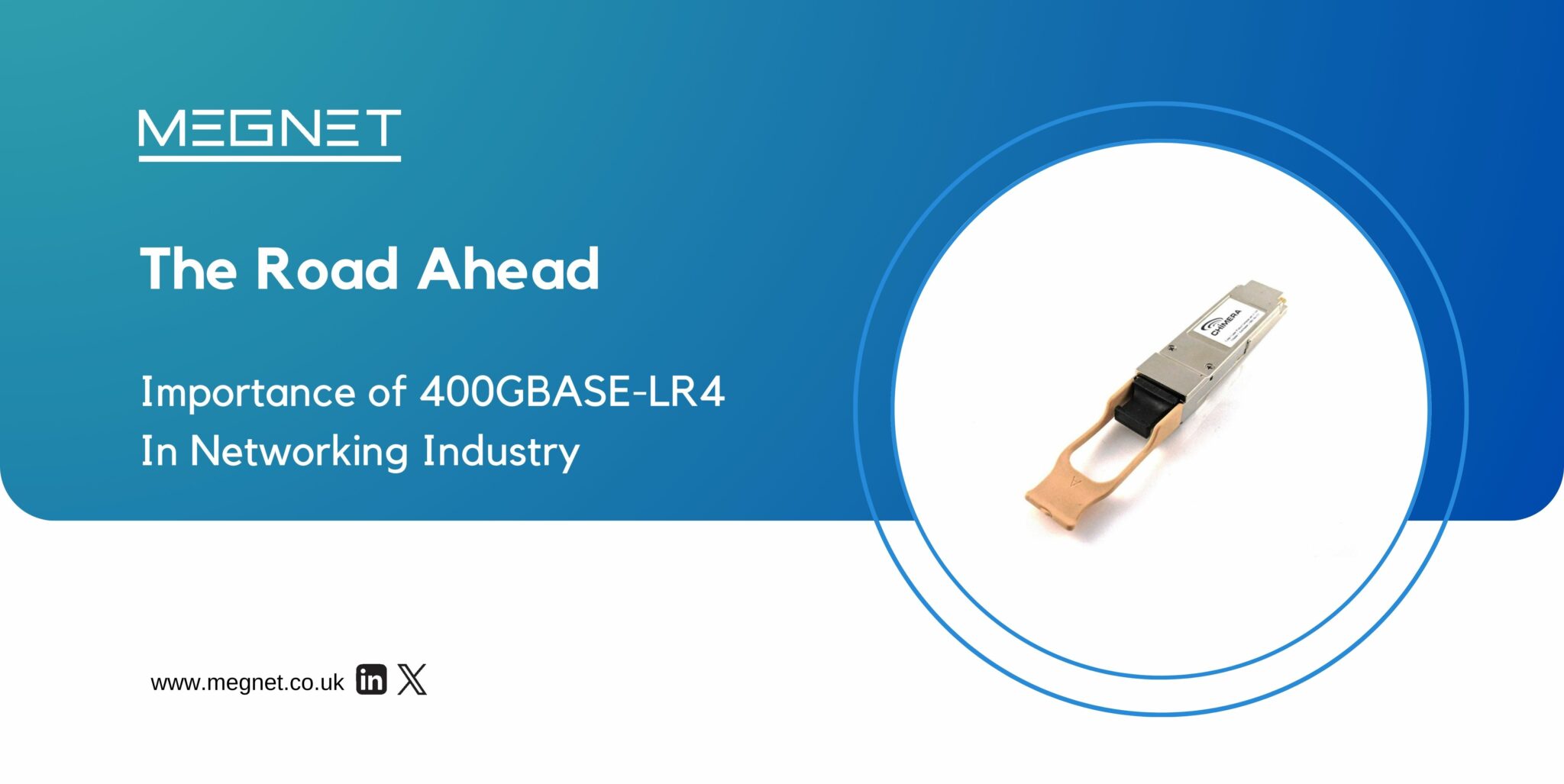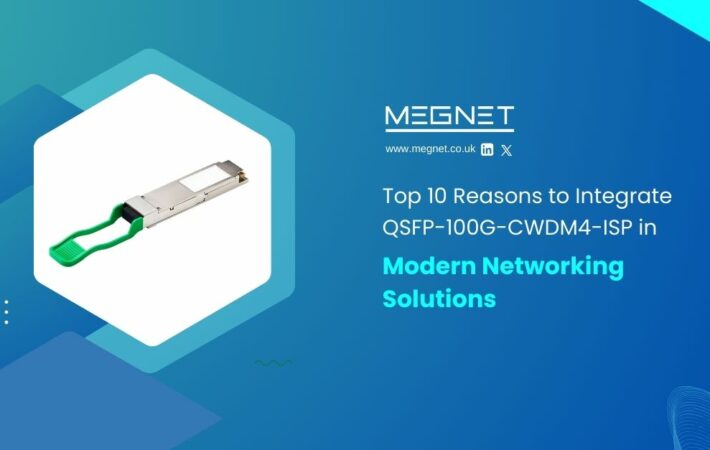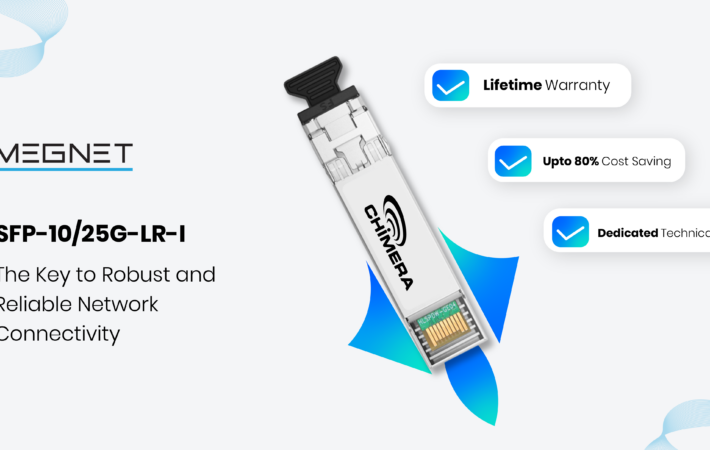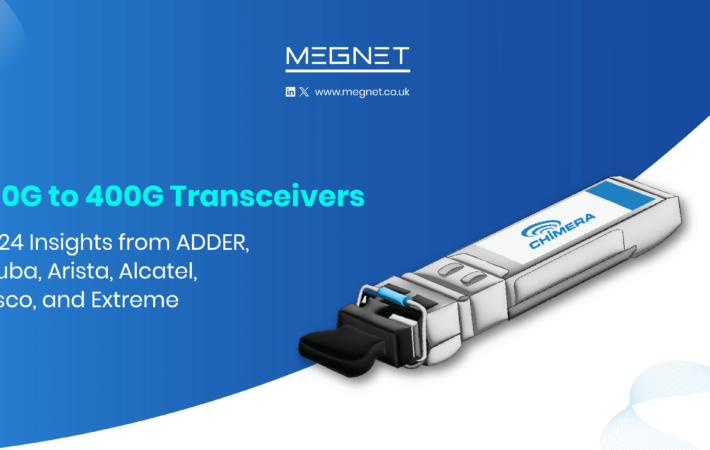
Unveiling the Significance of 400GBASE-LR4 in Networking
The digital landscape is exploding. Data centres hum with the constant thrum of information exchange, cloud services pulsate with the lifeblood of online activity, and high-performance computing tackles ever-more complex problems. At the heart of this revolution lies an invisible hero: Ethernet. And now, Ethernet is gearing up for its next leap forward with 400GBASE-LR4, a technological marvel promising a blazing-fast future for our networks.
But what exactly is 400GBASE-LR4, and why should you care? Buckle up, for we’re about to embark on a journey into the fascinating world of high-speed networking, where data races at the speed of light and possibilities seem boundless.
The Need for Speed (and Efficiency):
Imagine water trickling through a narrow pipe. That’s how traditional 10G and 100G Ethernet feel compared to the raging river of data coursing through modern applications. Video streaming, cloud services, and artificial intelligence are consuming bandwidth like never before, leaving networks strained and congested. Enter 400GBASE-LR4, quadrupling the data rate of 100G and transforming what was once a trickle into a torrent.
The benefits are profound. Websites load in a blink, video streams without buffering, and high-performance computing clusters crunch through massive datasets in a fraction of the time. But speed isn’t everything. Power consumption and cost are critical factors in data centre operations, and 400GBASE-LR4 tackles these challenges head-on with pulse amplitude modulation (PAM4).
PAM4: Packing More into Each Pulse:
Think of PAM4 as a language that packs more words into each sentence. Instead of simply representing ones and zeros (NRZ modulation), PAM4 uses four different voltage levels, allowing it to encode two bits of information where traditional methods could only manage one. This translates to doubling the data rate without doubling the number of lasers or the power consumption, a feat of engineering efficiency that makes 400GBASE-LR4 not just faster, but also friendlier to the environment and your wallet.
Sibling Rivalry: LR4 vs. LR8:
But just like superheroes often have rivals, 400GBASE-LR4 has its own: 400GBASE-LR8. Both technologies share the same goal of high-speed networking, but they go about it in different ways. LR4 uses four lasers, each firing at 100Gbps with PAM4, making it a simpler and more mature technology with good signal integrity and lower cost. However, its reach, the distance it can reliably transmit data, is limited compared to its eight-laser brother.
LR8, on the other hand, packs eight lasers, each firing at 50Gbps, doubling the reach and making it ideal for spanning longer distances between data centres or across campuses. But with more lasers comes increased complexity and cost, making it a trade-off between reach and affordability.
So, which one is better? It depends. If you’re working with shorter distances and budget is a concern, LR4 is your friend. But if you need to traverse wider gaps, LR8 might be the right choice.
The PAM4 Puzzle: Overcoming Noise and Distortion:
PAM4, though ingenious, isn’t without its challenges. Noise, distortion, and errors can creep in, threatening the integrity of the signal and disrupting the data flow. But engineers have developed a suite of digital knights to guard the purity of the signal: forward error correction (FEC) and digital signal processing (DSP).
FEC acts like a codebreaker, reconstructing missing or corrupted data, while DSP cleans up the signal, filtering out noise and distortions. These technologies work together to ensure that the data arrives at its destination safe and sound, even amidst the electrical chaos of high-speed transmission.
The Future Beckons: A Glimpse into Tomorrow:
The 400GBASE-LR4 story is just the beginning. The future whispers of even faster speeds with 800G and 1600G Ethernet on the horizon, promising to further revolutionise the way we move data. Integration with Dense Wavelength Division Multiplexing (DWDM) will multiply available bandwidth, while **software-defined networking (SDN)** will bring unprecedented flexibility and agility to network management. Imagine networks that can adapt to traffic demands on the fly, automatically rerouting data and optimizing performance in real-time. This vision of a self-healing, data-driven network is not some distant dream, but a tangible future that technologies like 400GBASE-LR4 are paving the way for.
We’ve peeled back the curtain on the 400GBASE-LR4 revolution, but the full story lies beneath the surface, nestled in the intricate workings of technology. For those who crave a deeper understanding, let’s take a technical tour de force, diving into the nuts and bolts of this transformative technology.
Optical Components: The Symphony of Light:
Imagine not cables, but beams of light carrying your data. That’s the magic of 400GBASE-LR4, where Vertical-Cavity Surface-Emitting Lasers (VCSELs) play the lead role. These tiny marvels generate short pulses of light at 100Gbps each, modulated by PAM4 to encode two bits per pulse. But the orchestra needs more instruments:
- Optical Multiplexers: These maestros combine the four laser beams into a single signal, maximizing fibre bandwidth utilization.
- Optical Amplifiers: As light traverses’ long distances, it weakens. Amplifiers, like stage risers, boost the signal strength, ensuring crystal-clear data delivery.
- Optical Demultiplexers: At the receiving end, these deconstruct the combined signal back into its four individual components, ready for processing.
The quality of these components is paramount. High-precision lasers minimize signal distortion, while advanced amplifiers combat noise and attenuation. It’s a delicate dance of light and precision, orchestrated to deliver flawless data transmission.
Dispersion: The Foe Afoot:
But light, like any traveller, encounters obstacles on its journey. Dispersion, the spreading of light pulses over distance, is the primary foe. Two types pose challenges:
- Chromatic Dispersion: Different wavelengths travel at different speeds within the fibre, causing pulses to overlap and distort the signal.
- Modal Dispersion: Light can take multiple paths within the fibre core, arriving at the destination out of sync, blurring the data.
To combat these foes, engineers have honed several weapons:
- Dispersion Pre-Compensation: By introducing a controlled amount of counter-dispersion at the start, the effects are negated at the receiver.
- Fibre Choice: Single-mode fibres, with a smaller core, minimize modal dispersion, while specialized dispersion-compensating fibres tackle chromatic dispersion head-on.
- Digital Signal Processing (DSP): This digital knight cleans up the received signal, filtering out distortions and compensating for dispersion effects.
The battle against dispersion is a constant war, demanding ever-evolving strategies and technologies. However, with each advancement, the reach and reliability of 400GBASE-LR4 extend further, pushing the boundaries of distance and performance.
Forward Error Correction (FEC): The Data Guardian:
Even with the best equipment, errors can creep in during transmission. Noise, interference, and even cosmic rays can corrupt data bits. But fear not, for Forward Error Correction (FEC) stands as the guardian angel, ensuring data integrity.
FEC works by adding redundant information to the data stream. At the receiver, this redundancy is used to identify and correct errors, reconstructing the original data with remarkable accuracy. Different FEC codes offer varying levels of protection and overhead, allowing network architects to strike a balance between reliability and efficiency.
With FEC on guard, data hurtles through the network, its integrity protected against the slings and arrows of transmission. It’s a testament to engineering ingenuity, ensuring that information arrives at its destination, pristine and unaltered.
The Road Ahead: Innovation Beckons
400GBASE-LR4 is not the final chapter in the Ethernet saga. The future whispers of even faster speeds, with 800G and 1600G Ethernet looming on the horizon. Integration with Dense Wavelength Division Multiplexing (DWDM) will further multiply available bandwidth, transforming fibres into data superhighways.
Software-Defined Networking (SDN) promises agility and automation, allowing networks to adapt to changing traffic demands on the fly. Imagine a network that can reroute data, optimize performance, and heal itself autonomously, all thanks to the power of software.
These are not mere dreams, but concrete steps towards a hyper-connected future. And 400GBASE-LR4 is not just a witness, but a catalyst, paving the way for these innovations and shaping the landscape of tomorrow’s networks.
Joining the 400G Revolution: Equipping Yourself for the Future
Whether you’re a data centre manager wrestling with congested links, a cloud architect craving unbridled bandwidth, or a high-performance computing expert pushing the boundaries of scientific discovery, 400GBASE-LR4 has the potential to unlock your full potential.
But navigating this technological frontier requires careful consideration. Understand your needs, assess your budget, and explore the different options
Embracing the 400GBASE-LR4 Revolution: From Planning to Implementation
The technical marvels of 400GBASE-LR4 have been laid bare, but translating potential into reality requires careful planning and strategic implementation. So, how do you navigate this technological frontier and leverage 400GBASE-LR4 to empower your network and unlock its full potential?
Step 1: Assessing Your Needs and Landscape:
Before embarking on the 400G journey, take a critical look at your current network landscape. Consider these key factors:
- Traffic Patterns: Analyse data flows, peak loads, and future growth projections. Do you face bottlenecks or anticipate significant increases in data volume?
- Current Infrastructure: Evaluate the compatibility of your existing hardware with 400GBASE-LR4. Are upgrades or replacements necessary, and what is the associated cost?
- Distance Requirements: Determine the distances your network needs to span. Will LR4’s reach suffice, or is LR8’s extended range essential?
- Budgetary Constraints: Be realistic about your financial resources. Upfront investments in 400GBASE-LR4 equipment can be significant but weigh them against the long-term cost savings from increased efficiency and performance.
Step 2: Charting the Course: Selecting the Right Option:
With a clear understanding of your needs, choose the 400GBASE-LR4 variant that best aligns with your goals:
- LR4: Ideal for shorter distances and budget-conscious deployments, offering good signal integrity and lower cost.
- LR8: Perfect for spanning longer distances between data centres or across campuses, but with increased complexity and cost.
Additionally, consider:
- Transceiver types: SFP-DD modules offer higher density and power efficiency, while QSFP-DD can connect to multiple lanes of 400GBASE-LR4 for even higher aggregate bandwidth.
- Fibre infrastructure: Single-mode fibres are necessary for optimal performance, while pre-terminated options can simplify installation.
Step 3: Building the Foundation: Infrastructure Upgrades and Optimization:
Deploying 400GBASE-LR4 isn’t just about swapping out hardware. Consider these crucial aspects:
- Power and cooling: Ensure your data centre’s power and cooling systems can handle the increased heat dissipation of 400GBASE-LR4 equipment.
- Network cabling: Upgrading to high-quality fibre optic cables is essential for maximizing signal integrity and minimising attenuation.
- Network management tools: Invest in tools that can monitor and manage your 400GBASE-LR4 network effectively, providing insights into performance and potential issues.
Step 4: Securing the Future: Integration and Beyond:
Think beyond immediate needs and consider how 400GBASE-LR4 can integrate with your future roadmap:
- Software-Defined Networking (SDN): Embrace SDN’s flexibility and automation to manage your network with agility and ease.
- Dense Wavelength Division Multiplexing (DWDM): Multiply available bandwidth by utilizing multiple wavelengths within a single fibre, maximizing your infrastructure investment.
- Futureproofing: Anticipate advancements like 800G and 1600G Ethernet and choose solutions that can seamlessly upgrade when the time comes.
Embracing the Challenge: A Transformation Worth Pursuing
Implementing 400GBASE-LR4 is not without its challenges. Careful planning, thorough research, and collaboration with experienced professionals are key to success. However, the rewards are substantial:
- Unmatched speed and efficiency: Boost data transfer rates, eliminate bottlenecks, and unlock the full potential of your applications.
- Enhanced agility and scalability: Prepare your network for future growth and adapt to changing demands with ease.
- Reduced operational costs: Lower power consumption and increased efficiency can lead to significant long-term cost savings.
The 400GBASE-LR4 revolution is not just about technology; it’s about empowering businesses and societies to operate at the speed of innovation. It’s about connecting communities, driving scientific advancements, and shaping the future of our digital world.
Joining the 400G Revolution: Are You Ready?
So, as we stand at the crossroads of technology, the question arises: where do you fit in this dynamic landscape? If your data centre struggles with congested links and lagging applications, or your HPC cluster yearns for seamless communication across nodes, then 400GBASE-LR4 might be your answer. The decision involves careful consideration. Weigh the unparalleled speed and efficiency against the initial investment. Analyse your needs, assess your budget, and explore the different options (LR4 vs. LR8) to find the perfect fit for your network.
But remember, this isn’t just about upgrading your hardware; it’s about embracing a future of possibilities. It’s about empowering innovation, accelerating discovery, and connecting the world like never before. With 400GBASE-LR4 leading the charge, the path to a faster, more efficient, and interconnected future lies before us. Are you ready to be a part of it?
FAQ's
A high-speed Ethernet technology quadrupling data rates to 400Gb/s compared to 100Gb/s, ideal for data centres, cloud services, and high-performance computing
400GBASE-LR4 uses four lasers with pulse amplitude modulation (PAM4) to pack two bits per pulse, doubling data rate without doubling lasers or power consumption
Blazing-fast speed, improved efficiency, reduced latency, increased data centre capacity, and smoother high-performance computing workloads.
Initial investment costs, potential fibre upgrade needs, and managing increased heat dissipation.
LR4 uses four lasers for shorter distances, while LR8 uses eight lasers for longer distances but at a higher cost.
Chromatic and modal dispersion can disrupt signals; techniques like dispersion pre-compensation and DSP algorithms help mitigate these effects.
Forward error correction (FEC) adds redundancy to data, allowing reconstruction of corrupted bits and ensuring data integrity.
If your network is congested, applications lag, or data demands are rapidly increasing, then 400GBASE-LR4 could be a game-changer
Evaluate your existing hardware compatibility, power, cooling, and fibre infrastructure for potential upgrades.
Continued integration with DWDM and SDN for further flexibility and bandwidth expansion, along with advancements towards even faster Ethernet standards.









Leave a comment
Your email address will not be published. Required fields are marked *